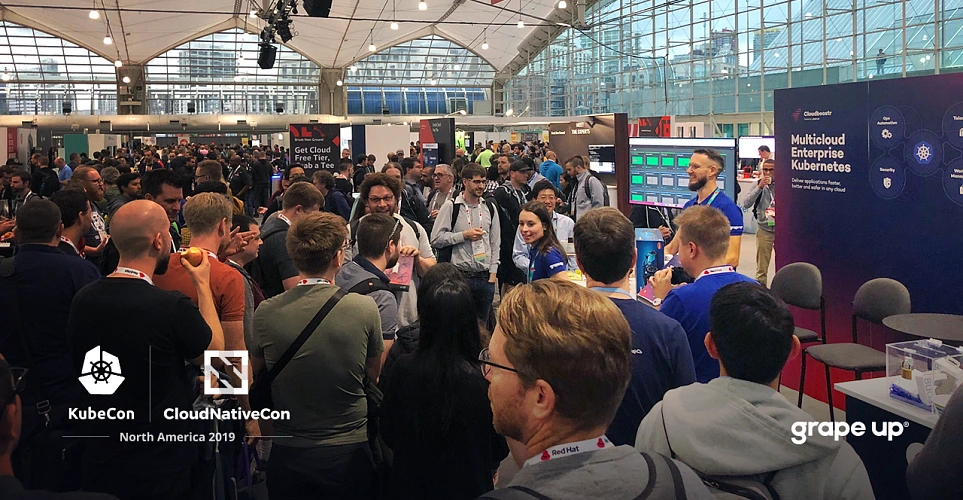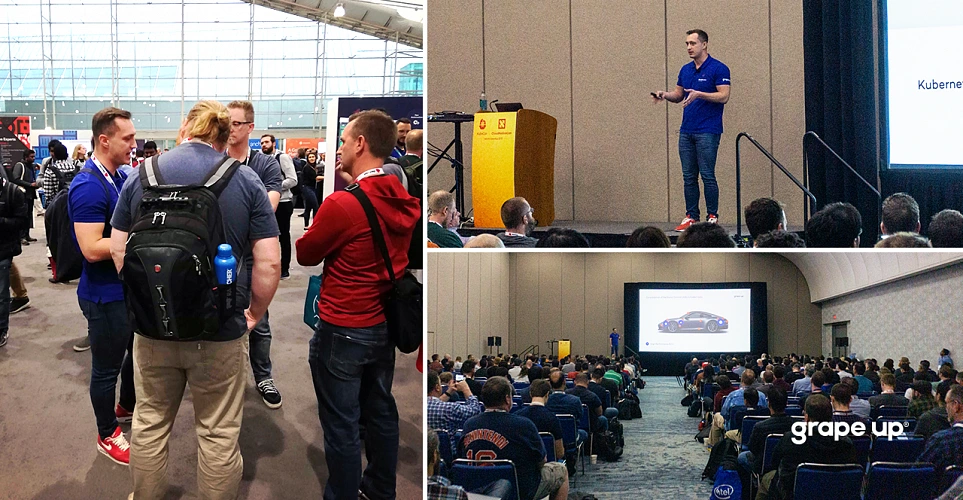The State of Kubernetes – What Upcoming Months Will Bring For the Container Orchestration

Kubernetes has become a must-have container orchestration platform for every company that aims to gain a competitive advantage by delivering high-quality software at a rapid pace. What’s the state of Kubernetes at the beginning of 2020? Is there room for improvement? Here is a list of trends that should shape the first months of the upcoming year.
As a team that provides own Multicloud Enterprise Kubernetes platform and empowers numerous companies in adopting K8s, we follow all the news that helps to prepare for the upcoming trends in using this cloud-native platform. And there are the best places to learn what’s new and what’s coming like KubeCon I CloudNativeCon conferences.
A few weeks ago, San Diego hosted KubeCon + CloudNativeCon North America gathering 12 thousand cloud-native enthusiasts – 50% increase in the number of attendees in comparison to the previous edition shows the scale of the Kubernetes’ popularity growth. During the event, we had a chance to listen about new trends and discuss further opportunities with industry experts. Most of the news announced in San Diego will influence the upcoming months in a cloud-native world. Below, we focus on the most important ones.
Kubernetes is a must for the most competitive brands
What makes KubeCon so likable? Access to Kubernetes experts, networking with an amazing community of people gathered around CNCF, chance to learn the trends before they become mainstream? For sure, but what also makes it so special? The answer comes to the hottest brands that join cloud-native nation these days – Pinterest, Home Depot, Walmart, Tinder and many more.

It’s obvious when tech companies present how they build their advantage using the latest technologies, but it becomes more intriguing when you have an opportunity to get to know how companies like Adidas, Nike or Tinder (yes, indeed) are using Kubernetes to provide their customers/users with extraordinary value.
As attached examples show, we live in the software-driven world, where the quality of delivered apps is crucial to stay relevant, regardless of the industry.
Enterprises need container orchestration to sustain their market share
The conference confirmed that Kubernetes is a standard in container orchestration and one of the key elements contributing to the successful implementation of a cloud-first strategy for enterprises.
But why the largest companies should be interested in adopting the newest technologies? Because their industries are being constantly disrupted by fresh startups utilizing agility and cutting-edge tech solutions. The only way to sustain position is by evolving. The way to achieve it comes to adopting a cloud-native strategy and implementing Kubernetes. As Jonathan Smart once said – “You’re never done with improving and learning.”
Automate what can be automated
As more and more teams move Kubernetes to production, a large number of companies is working on solutions that would help streamline and automate certain processes. That drives to the growing market of tools associated with Kubernetes and enriching its usage.
For example, Helm, which has its place in the native cloud toolbox used by administrators as one of the key deployment tools in its latest version, simplifies and improves operation by getting rid of some dependencies, such as Tiller, a server-side component running in the Kubernetes cluster.
Kubernetes-as-a-service and demand for Kubernetes experts
During this year’s KubeCon, many vendors presented a range of domains that have been offering complete solutions for Kubernetes, accelerating container orchestration. At previous events, we met vendors who have been providing storage, networking, and security components for Kubernetes. This evolution expresses the development of the environment built around the platform. Such an extensive offer of solutions allows teams or organizations to migrate to the native cloud to facilitate finding a compromise regarding “building versus buying” concerning components and solutions.
Rancher announced a solution that may be an example of an interesting Kubernetes-as-a-service option. The company collaborated with ARM to design a highly optimized version of Kubernetes for the edge – packaged as a single binary with a small footprint to reduce the dependencies and steps needed to install and run K8s in resource-constrained environments (e.g. IoT or edge devices for ITOps and DevOps teams.) By making K3s (lightweight distribution built for small footprint workloads) available and providing the beta release of Rio, their new application deployment engine for Kubernetes, Rancher delivers integrated deployment experience from operations to the pipeline.
Kubernetes-as-a-service offerings on the market are gaining strength. The huge number of Kubernetes use cases entails another very important trend. Companies are looking for talent in this field more than ever. Many companies have used conferences to meet with experts. Therefore, the number of Kubernetes jobs has also increased. The demand for experts on the subject is huge.
Multicloud is here to stay
Are hybrid solutions becoming a standard? Many cloud providers have claimed to be the best providers for multi-clouds – and we observe the trend that it becomes more popular. Despite some doubts (regarding its complexity, security, regulatory, or performance) enterprises are dealing well with implementing a multicloud strategy.
Top world’s companies are moving to multicloud as this approach empowers them to gain exceptional agility and huge cost savings thanks to the possibility to separate their workloads into different environments and make decisions based on the individual goals and specific requirements.
It is also a good strategy for companies working with private cloud-only. Usually, that’s the case because of storing sensitive data. As numerous case studies show, these businesses can be architected into multicloud solutions, whereas sensitive data is still stored securely on-premise, while other things are moved into the public cloud, which makes them easily scalable and easier to maintain.
Kubernetes is everywhere, even in the car….
During KubeCon, Rafał Kowalski, our colleague from Grape Up shared his presentation about running Kubernetes clusters in the car – “Kubernetes in Your 4×4 – Continuous Deployment Direct to the Car”. Rafał showed how to use Kubernetes, KubeEdge, k3s, Jenkins, and RSocket for building continuous deployment pipelines, which ship software directly to the car, deals with rollbacks and connectivity issues. You can watch the entire video here:
…. and can be used in various devices
But these are not all of the possibilities; other devices such as drones or any IoT devices can also utilize containers The need for increased automation of cluster management and the ability to quickly rebuild clusters from scratch were the conclusions breaking through the above-mentioned occurrences.
The environment shows, through the remarkable pattern of the number of companies using Kubernetes and the development of utilities, there are still open needs in terms of simplicity and scalability of tools for operations, e.g. Security, data management, programming tools, and continuing operations in this area should be expected.
“Kubernetes has established itself as the de facto standard for container orchestration,”- these are the most frequently repeated words. It’s good to observe the development of the ecosystem around Kubernetes that strives to provide more reliable and cheaper experiences for enterprises that want to extend their strategic initiatives to the limit.

Check related articles
Read our blog and stay informed about the industry's latest trends and solutions.
see all articles

Highlights from KubeCon + CloudNativeCon Europe 2019 – Kubernetes, Service Mesh Interface, and Cloudboostr
Read the article



